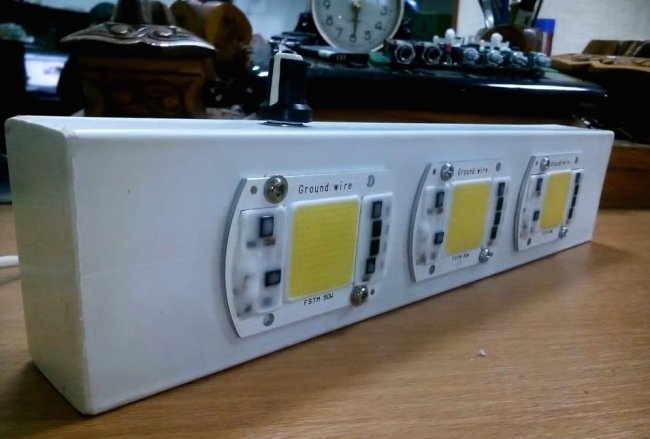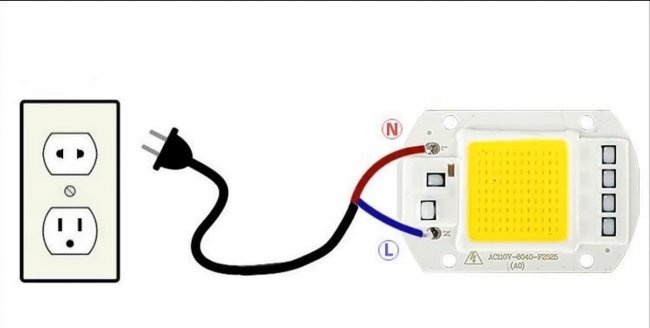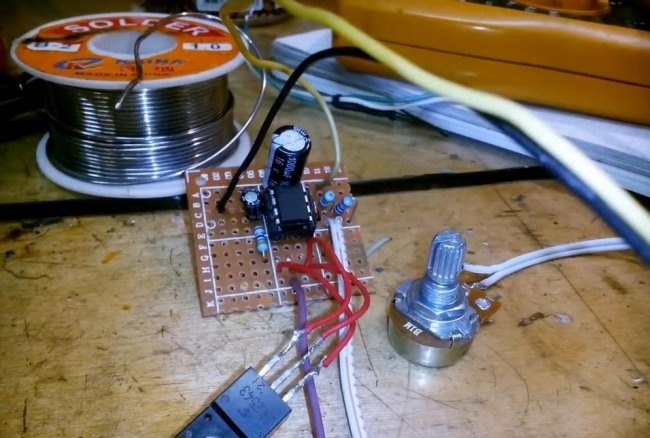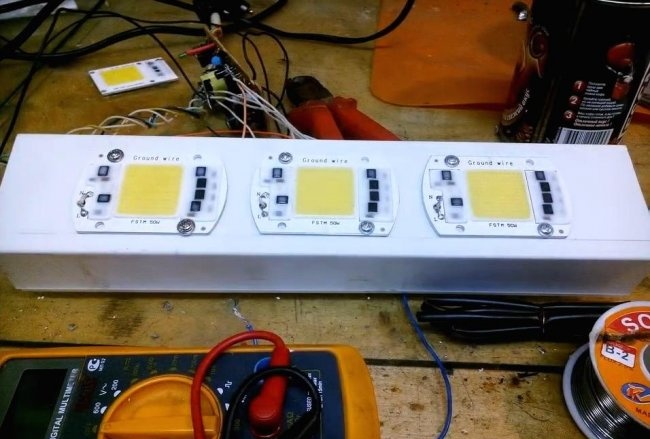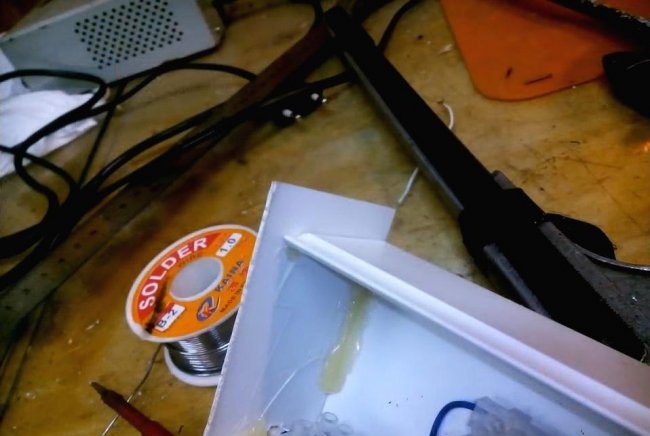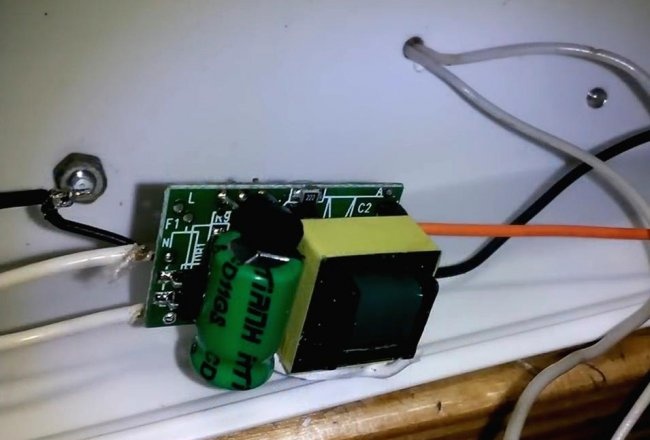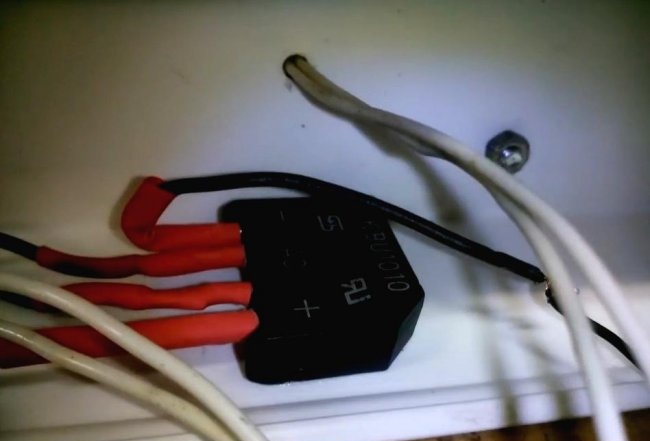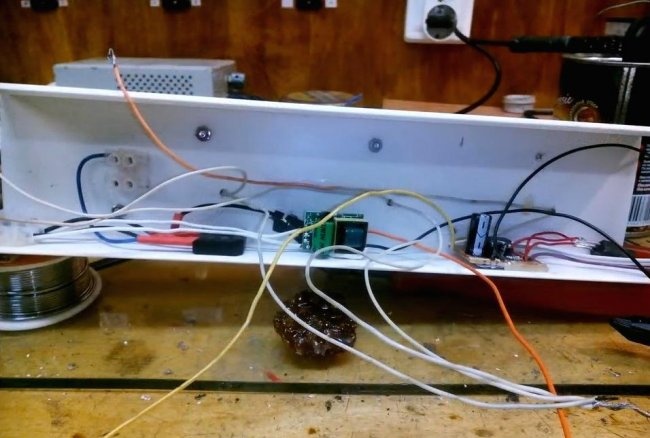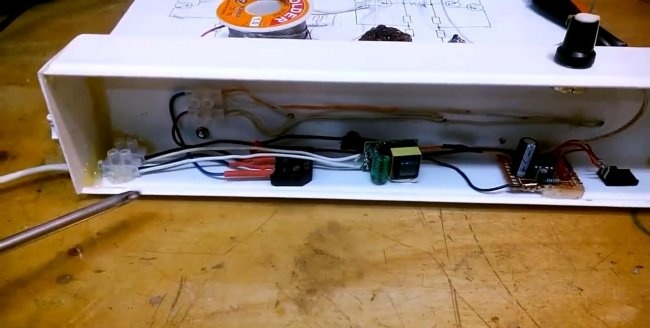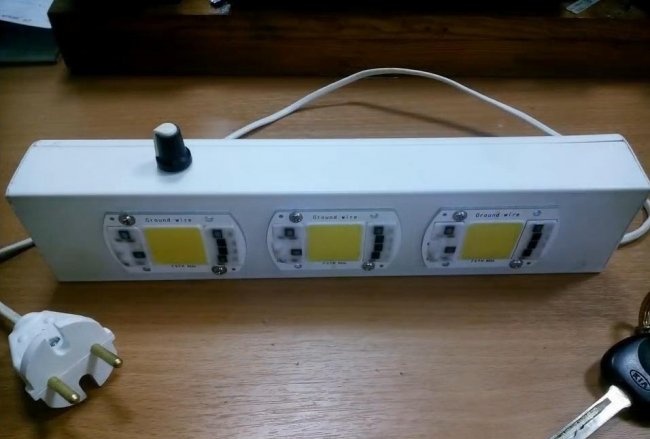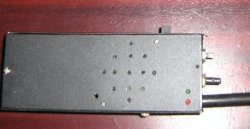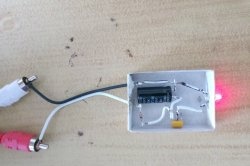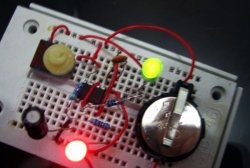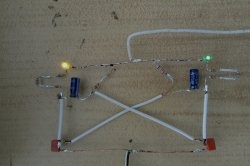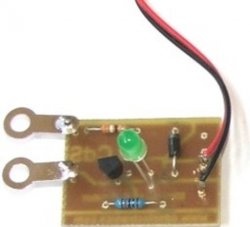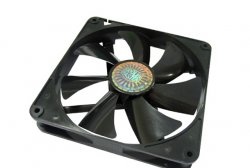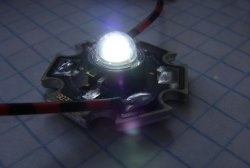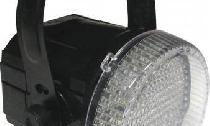The principle of operation of the device is to give very short pulses of light (flash) after a given period of time. In action, it very much resembles lightning during rain, when a completely dark room illuminates bright milliseconds.
During a disco, it looks especially bewitching.
Details:
- LED Matrix -
- 12 V source -
- Transistor K2543 -
- Diode bridge -
- Chip NE555 -
- Resistors and Capacitors -
Mains voltage LEDs with integrated driver:
Strobe scheme
I would not say that the scheme is complex, rather simple. But it does not have a galvanic isolation for voltage, which means that you can not touch any of the circuit elements during its operation and during assembly, be especially careful.
Visually, the circuit can be divided into a 12 V power supply, a pulse generator, a rectifier and a line of LEDs.
Strobe operation
On the NE555 chip, a short pulse generator is assembled. The time between pulses can be changed by rotating the handle of the variable resistor R3.
A key on a field-effect transistor is connected to the output of this generator, which switches the voltage of 220 V, in the power supply circuit of LED arrays connected in parallel to each other.
LED matrixes are powered by direct current, which is rectified by a diode bridge. This is necessary so that the circuit can be switched by a field-effect transistor, which only works with constant voltage.
Strobe assembly
The strobe is assembled in a casing from the cable channel. LEDs are screwed to the wide side, without radiators. Since the LED is used somewhere at 2-5% of its power (pulsed operation), the need for heat sinks disappears.
The side walls are cut from the same cable duct and glued with glue. A variable resistor is displayed at the top to adjust the flicker frequency.
Circuit blocks in the case:
Warning
LEDs are very powerful and can damage your eyes, so looking at them while working is not recommended. Gating flashes are especially dangerous, as the eye relaxes in the dark, and a bright impulse penetrates directly into the retina.
Also, do not forget that the whole circuit is under voltage, which is life threatening.
Work result
Unfortunately, the strobe operation cannot be transmitted either through a photo or through a video. Since even a video camera picks up a short pulse very poorly and in the end it just lights up.
But I can say on my own that the strobe turned out to be excellent, the flashes are short and very bright. It looks very impressive, in general, everything is as it should.
